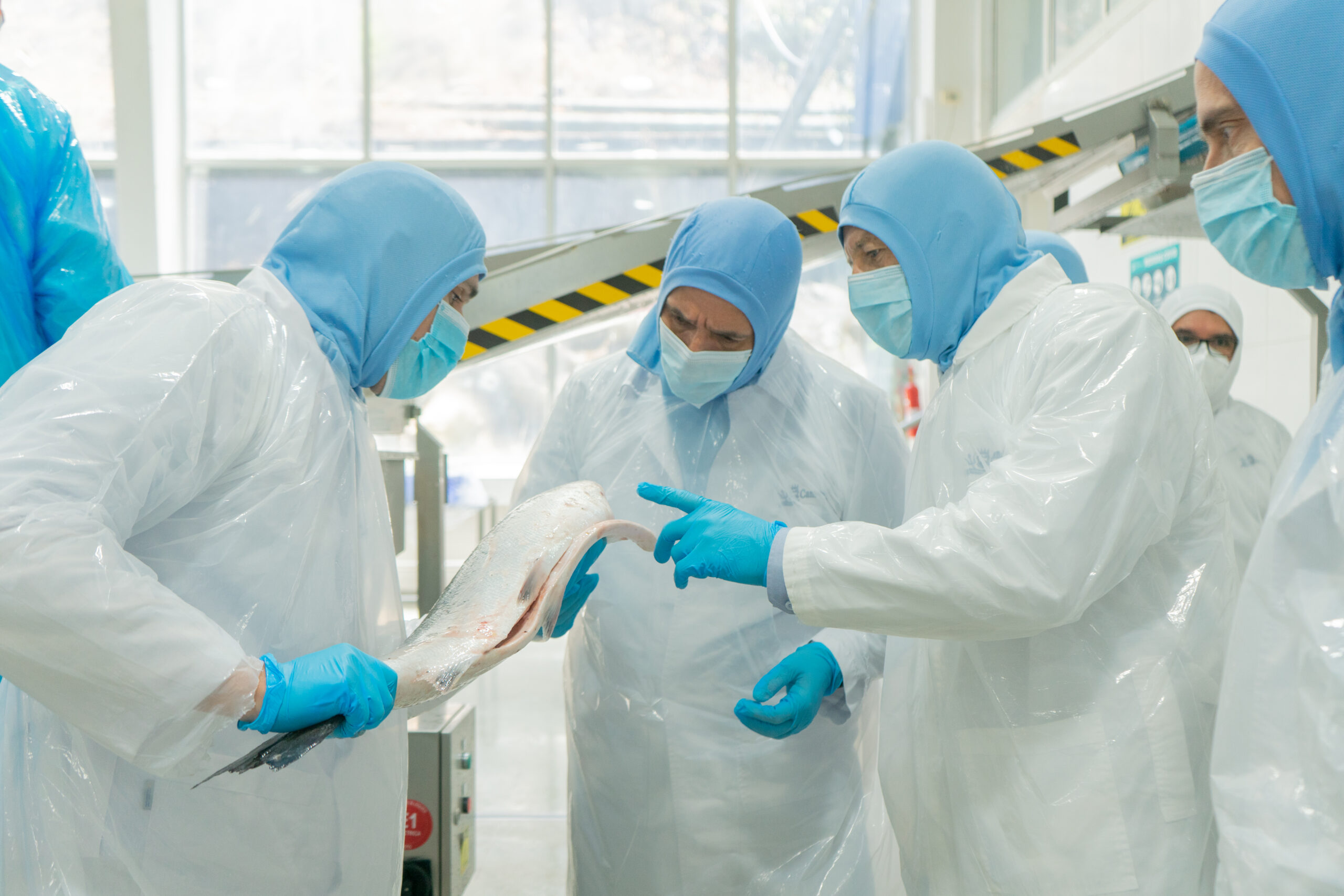Camanchaca is the main source of employment for the community, as it has salmon and Langostine lobster plants that employ over 1,800 people, where more than 40% are female family leaders.
This morning the Regional Biobío Governor, Rodrigo Díaz Wörner, toured the Salmones Camanchaca plant in Tomé together with the Productive Development and Industries Manager, Iván Valenzuela Díaz, who highlighted the dedication of over 1,800 employees at this modern factory that processes the fish farmed in southern Chile.
The visit was led by Ricardo García Holtz, CEO of Camanchaca, and by three managers of the company’s divisions in the Biobío Region. They are Jorge Vergara González of Salmones, Alejandro Florás Guerraty of Pesca Sur, and Antonio Ramírez Arrieta of Logistics.
These executives mentioned during the meeting that Camanchaca’s two salmon and Langostine lobster plants in Tomé and its Coronel and Talcahuano facilities employ almost 1,900 people, including direct and indirect employees, 41% of whom are female family leaders.
They also mentioned that production in Tome is fully focused on high value-added products for direct human consumption within both Chilean and export markets.
The Regional Biobío Governor praised the social and economic impact of Camanchaca’s business on Tomé and the surrounding area, which is a significant source of employment for local women. “It is an enormous source of employment for people living in Tomé, for the many generations of residents who have been employed by the fishing industry. It is also a source of innovation, as it has taken salmon and diversified the number of its target markets. It is really impressive how value is being added and how it is trying to generate more jobs and more foreign exchange for the country”.
Ricardo García Holtz reiterated Camanchaca’s commitment to Tomé, where the company began more than five decades ago as a Langostine lobster company. He added “we are older than most of Tomé’s residents and we are proud that our salmon and Langostine lobster production has made us the principal employer in Tomé, which has helped its residents to develop.”
He mentioned that three years ago Camanchaca took a decentralization step by moving some of its corporate functions from Santiago to Tomé, “It is important for us to be close to our production facilities and to strengthen regional talent, which has transformed Tomé and Coronel into two fundamental company development centers.” Camanchaca now provides support services from Tomé to all of Chile covering logistics, accounting, procurement, foreign trade and technology.”
Another topic discussed at these meetings was the company’s contribution to sustainable development within the community, and modernization plans to improve environmental management were analyzed.
Camanchaca in the Biobío Region
Camanchaca operates facilities at Coronel, Talcahuano and Tomé within the Biobío Region, where it has Industrial Fishing, Logistics and Salmon Farming divisions. Over 3,000 people are employed in its plants and ships across the region to catch and process jack mackerel, sardine and Langostine lobster, to process the salmon farmed in southern Chile, and to provide logistics services on Rocuant Island.
 Contacto
Contacto  Denuncias
Denuncias  Est. Financieros
Est. Financieros  Portal Clientes
Portal Clientes  Proveedores
Proveedores 

